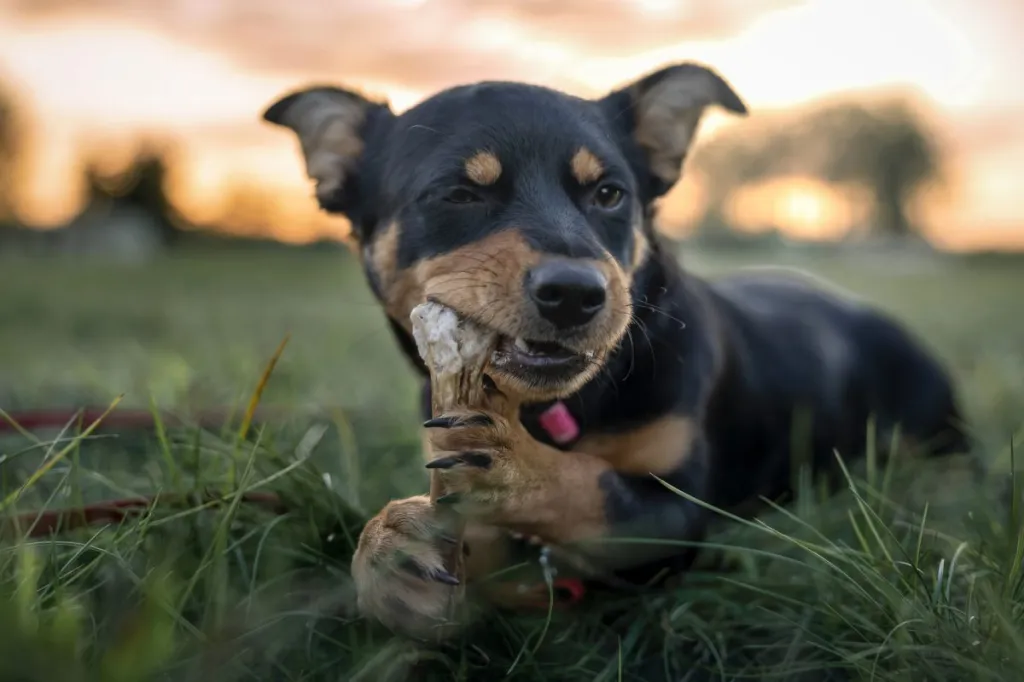Welcome to our comprehensive guide on choosing safe dog bones for your furry friend! As an animal expert, I’ll walk you through everything you need to know about selecting bones that are not only enjoyable but also safe for your dog’s health. From understanding the different types of bones to tips on safe chewing habits and potential risks, let’s dive into this bone-afide topic together!
Understanding Dog Bones: Types and Considerations
Types of Dog Bones
Dog bones come in various types, each offering different benefits and potential risks. Understanding these types can help you make informed choices for your canine companion:
Raw Bones
- Description: Raw bones, such as raw beef or pork bones, are uncooked and often meaty.
- Benefits: They provide natural dental benefits, including teeth cleaning and gum stimulation.
- Risks: Raw bones can splinter, potentially causing oral injuries or digestive issues if swallowed in large chunks.
Cooked Bones
- Description: Cooked bones, like cooked chicken or turkey bones, are leftovers from meals.
- Benefits: Dogs enjoy the taste and may chew on them for entertainment.
- Risks: Cooked bones are brittle and can splinter easily, leading to choking hazards or gastrointestinal obstructions.
Synthetic Bones
- Description: Synthetic bones are manufactured from materials like nylon or rubber.
- Benefits: They are durable, long-lasting, and designed to withstand heavy chewing.
- Risks: Poor-quality synthetic bones can break into sharp pieces, posing injury risks. Monitor for wear and tear.
Government and Veterinary Guidelines
It’s crucial to follow guidelines from veterinary professionals and government bodies when selecting bones for your dog. These guidelines emphasize safety, nutrition, and the prevention of potential health risks associated with bone consumption.
Benefits of Chewing Bones for Dogs
Dental Health Benefits
Chewing bones helps maintain oral hygiene by reducing plaque buildup, preventing tartar formation, and promoting gum health. This natural chewing action also exercises jaw muscles and provides mental stimulation for your dog.
Behavioral Enrichment
Chewing bones satisfies your dog’s natural instinct to chew and gnaw. It serves as a form of enrichment, keeping them entertained and mentally stimulated, especially for breeds with high energy levels or those prone to boredom.
Potential Risks and Precautions
Choking Hazards
Bones that splinter or break into small pieces pose a choking hazard if swallowed whole or lodged in the throat. Monitor your dog while chewing and remove small or sharp pieces immediately.
Gastrointestinal Issues
Consuming large pieces of bone, especially cooked bones that can splinter, may lead to gastrointestinal issues such as obstruction or perforation. Signs include vomiting, diarrhea, lethargy, and abdominal discomfort.
Dental Fractures and Injuries
Hard bones or bones that are too dense can cause dental fractures, broken teeth, or injuries to the gums and oral tissues. Choose bones appropriate for your dog’s size and chewing strength to minimize risks.
Safe Chewing Practices
Size and Texture
Select bones that are appropriate for your dog’s size, breed, and chewing habits. Large, sturdy bones are safer for heavy chewers, while smaller or softer bones suit smaller breeds or puppies.
Supervision
Always supervise your dog when chewing bones, especially if they are prone to aggressive chewing or have a history of swallowing large pieces. Remove the bone if it becomes too small or damaged.
Proper Storage
Store bones safely when not in use to prevent access by children or other pets. Dispose of bones that are worn down, broken, or too small to prevent choking or ingestion risks.
Choosing the Best Bones for Your Dog
Consultation with Veterinarian
Consult your veterinarian before introducing bones to your dog’s diet, especially if they have dental issues, dietary restrictions, or a history of gastrointestinal sensitivity.
Quality and Sourcing
Choose bones from reputable sources known for quality and safety. Avoid bones treated with artificial flavors, preservatives, or chemicals that may be harmful to your dog’s health.
Conclusion
Choosing safe dog bones involves understanding the types of bones available, their benefits and risks, and practicing responsible chewing habits. By following veterinary guidelines and monitoring your dog’s chewing behavior, you can provide enjoyable and safe bone-chewing experiences for your furry companion.
- Best Clay Alternatives for 2025 - April 19, 2025
- Best Seamless.ai Alternatives for 2025 - April 19, 2025
- Best UpLead Alternatives for 2025 - April 18, 2025



